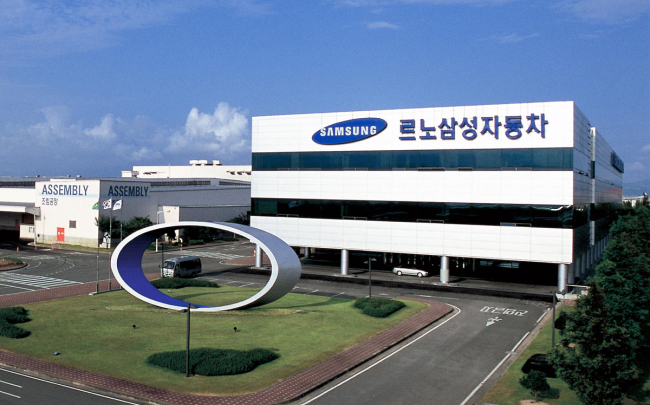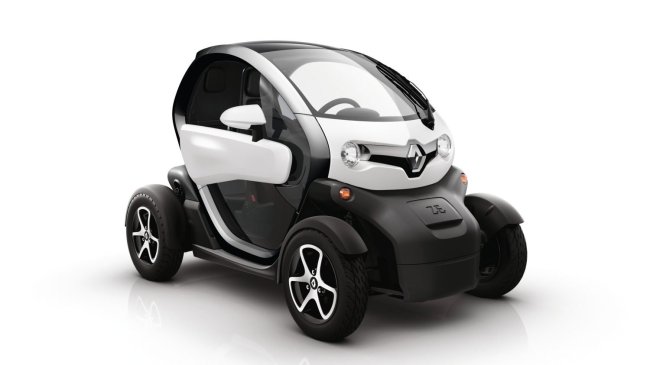[Feature] Amid labor dispute, falling sales, Renault Samsung marks gloomy 20th year
Automaker strives to pull up sales by diversifying sales channels, including discount stores
By Kim Da-solPublished : April 23, 2019 - 16:34
For a 42-year-old veteran driver surnamed Yim, the QM6 compact sport utility vehicle he has owned since 2017 is his pride.
“QM6, without a doubt, is the strongest car from a trustworthy automaker,” said Yim, showing a photo of a car crash scene where his QM6 looks relatively unscathed while a white sedan that it had collided with it has been smashed to pieces.
“The car, no matter what, has to be safe and strong. This was the biggest merit of Samsung Motors, known for high quality products. But many Renault Samsung car owners now worry that Korean customers may not be able to see such quality cars in the future,” Yim said, adding that some say that Renault Samsung will follow General Motor’s example eventually.
Renault Samsung, launched in 1999 to break Hyundai Motor’s market dominance, is set to celebrate its 20th, yet it is a gloomy anniversary this year amid an intensifying labor dispute and falling sales.
“QM6, without a doubt, is the strongest car from a trustworthy automaker,” said Yim, showing a photo of a car crash scene where his QM6 looks relatively unscathed while a white sedan that it had collided with it has been smashed to pieces.
“The car, no matter what, has to be safe and strong. This was the biggest merit of Samsung Motors, known for high quality products. But many Renault Samsung car owners now worry that Korean customers may not be able to see such quality cars in the future,” Yim said, adding that some say that Renault Samsung will follow General Motor’s example eventually.
Renault Samsung, launched in 1999 to break Hyundai Motor’s market dominance, is set to celebrate its 20th, yet it is a gloomy anniversary this year amid an intensifying labor dispute and falling sales.

From the start the automaker had the SM5, introduced to the market in March 1998. The car was the made by Samsung in heavy conjunction with Nissan, and quickly led the midsized sedan market with its durability boosted by Samsung’s brand power.
But with a lack of industry experience and hit by a financial crisis, Samsung Motors soon went bankrupt, leading to its acquisition by Renault in 2000.
After two decades of operations, the carmaker sold just 39,210 cars in the first quarter this year. The number fell below 40,000 for the first time since September 2014, when the carmaker began manufacturing the Nissan Rogue SUV at the company’s Busan factory for overseas shipments.
In March alone, its combined domestic and global sales reported a 49 percent plunge compared to a year ago, selling 13,797 cars. Its exports fell 62.3 percent to 7,256 units last month from the previous year, with reduced consignment production by 47.2 percent on-year.
Recently, the company’s management even ordered a temporary shutdown of its Busan plant after the 26th round of wage talks with the labor union ended without an agreement, raising uncertainty in the carmaker’s business in Korea.
The two sides have been locking horns over wages and productivity over the past six months, with the union staging 58 partial strikes since October. The sit-in protests have resulted in production losses of 13,000 vehicles, according to the company.
The union has demanded a wage hike and less working hours, while the company wants to maintain a certain output level at the plant by securing export models from its parent company.
The carmaker’s history dates back to 1994 as the automobile unit under Korean information technology powerhouse Samsung.
Led with Samsung Chairman Lee Kun-hee’s passion for cars, Samsung tried to build an auto giant with technical assistance from Nissan. The company began selling cars in 1998, but went bankrupt when the Asian financial crisis hit South Korea the following year.
Renault now owns an 80.1 percent share of the automaker and Samsung Card holds 19.9 percent.
After the acquisition, the company continued to absorb Nissan’s technical skills while keeping Samsung’s brand image for high product quality. For years, its complete sedan lineup comprised the midsized SM5 sedan, SM3 compact car and SM7 large sedan to compete with market leader Hyundai Motor.
However, Renault Samsung’s position as an affiliate of a foreign carmaker and its weak decision-making power may have undermined its competitiveness in the market, experts say.
“Renault Group has been passive about the Korean market. Constant sales drops have led to (the parent company’s) less attention to the Korean market, leading to fewer new cars that can compete in the market,” said Lee Ho-geun, a professor of automotive engineering from Daelim University.
“For foreign carmakers that have a plant in Korea, to be honest, the Korean market is ‘just one of them’ and it is highly likely to give up and withdraw from the low-performing markets,” Lee said.
In 2000, Renault Samsung was selling at least 100,000 units of cars annually. But the number dropped sharply in 2003 to 50,000 units. In 2016, the number climbed back to around 100,000 units with the hit models SM6 and QM3, but since then the number has continued its free fall.
Its market share has also dropped well into the single digits, from 12.8 percent in 2010 to 4 percent last year.
To shake off its staggering sales, the company has been diversifying its sales channels here, partnering with retail giant E-mart.
It began selling its mini electric vehicle Twizy at 25 E-mart stores across the country in 2017. In the first year, it sold 700 units, while the number doubled to 1,500 units last year. The price goes as low as 6.2 million won ($5,430) with city government subsidies.

Active sales promotion of Twizy here shows Renault Samsung’s effort to continue investment in the Korean market, according to the firm.
Renault Samsung Motors CEO Dominique Signora said during a recent meeting with Busan Mayor Oh Keo-don that Renault Samsung Motors’ only plant in Busan is “a core asset for the company” to remain competitive in the domestic market.
By manufacturing Twizy at the Busan plant from September, Signora said it will create more jobs, increase export volume and contribute to revitalizing the local economy.
But experts point to the Busan plant’s production focus on overseas shipments.
“Its Busan plant is mainly focused on producing export models, not for domestic sales. If the latest model XM3 does not secure significant overseas sales, there is a high possibility Renault Samsung will exit the Korean market,” said professor Kim Pil-soo of automotive engineering from Daelim University, adding that the French headquarters may transfer XM3 production to its plant in Spain, considering the Busan plant’s productivity.
Currently, about 65 percent of the Busan plant’s total production is for overseas shipments. The company has maintained its stance to keep a fixed production amount for export models, while the union has argued for an increase in wages with lower labor intensity.
By Kim Da-sol (ddd@heraldcorp.com)

















![[KH Explains] Hyundai's full hybrid edge to pay off amid slow transition to pure EVs](http://res.heraldm.com/phpwas/restmb_idxmake.php?idx=652&simg=/content/image/2024/04/18/20240418050645_0.jpg&u=20240419100350)

